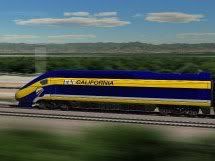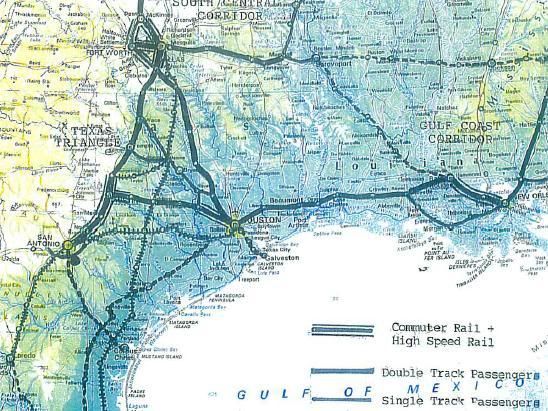Burning the Midnight Oil for Living Energy Independence
 As I mentioned in last week’s Sunday Train, the California HSR Authority came out with a revised draft Business Plan.
As I mentioned in last week’s Sunday Train, the California HSR Authority came out with a revised draft Business Plan.
And why do you revise a draft Business Plan? Because some people suggested some modifications to your previous draft Business Plan might be in order … for instance, if there’s a possibility that you cannot get bonds authorized to start work on the part of the corridor where the Federal Government has already put some funding on the table.
The new, revised, draft Business Plan seems to mark the final passing of the baton from the Judge Kopp absolutist vision of the what an HSR “simply has to be” to the more grounded, realistic vision of Governor Brown …
… and in the process of dragging the HSR Authority back into touch with reality, it is quite possible that Governor Brown has saved the California HSR project.
There are two qualifiers here. The first is that without an account of someone privy to the details of the Governor’s intervention, we won’t know what changes were things the California HSR was on track to doing anyway, and what changes were pushed upon them. But even there, what “the HSR Authority wanted to do” was likely heavily influenced by the changing of the guard from Schwarzenegger appointees to Brown appointees at the Authority.
The second is that getting to work is not yet a done deal. Supporters of the project ~ whether ongoing supporters or those won over by the newly revised plan ~ still need to work to help see the project through to construction of the first construction segment.
The devil is in the details, so we go chasing the devil below the fold.

 The headlines out of California indicate that there has been a substantial shift in terms of the California HSR system. In particular, it seems that Gov. Brown has waded into the fray and is reframing the issue from the Only-An-Infrastructure-Geek-Could-Love frame of the Initial Construction Segment and the mythical “Train to Nowhere”, to the “when do I get to ride it?” frame of the Initial Operating Service.
The headlines out of California indicate that there has been a substantial shift in terms of the California HSR system. In particular, it seems that Gov. Brown has waded into the fray and is reframing the issue from the Only-An-Infrastructure-Geek-Could-Love frame of the Initial Construction Segment and the mythical “Train to Nowhere”, to the “when do I get to ride it?” frame of the Initial Operating Service. Nearly a month ago, Yonah Freemark had a post at
Nearly a month ago, Yonah Freemark had a post at  Yeah, OK, its not Sunday, but I got called on Saturday morning after a Friday night class to substitute for a colleague, and that threw me off completely. Fortunately for the Sunday Train, I am massively underemployed, so there is Monday afternoon available to finish composing what I been thinking about this week.
Yeah, OK, its not Sunday, but I got called on Saturday morning after a Friday night class to substitute for a colleague, and that threw me off completely. Fortunately for the Sunday Train, I am massively underemployed, so there is Monday afternoon available to finish composing what I been thinking about this week. There has recently been a flurry of activism regarding regulatory approval of the “XL Pipeline” in support of bitumen production from Canadian Tar Sands. This is an issue that has attracted substantial attention from a variety of bloggers ~ the
There has recently been a flurry of activism regarding regulatory approval of the “XL Pipeline” in support of bitumen production from Canadian Tar Sands. This is an issue that has attracted substantial attention from a variety of bloggers ~ the  Yonah Freemark at his site
Yonah Freemark at his site  Back in the 90’s, Texas tried to get an Express HSR system off the ground (that is, a bullet train system somewhere in the 125mph to 220mph range) with the “Texas Triangle” project.
Back in the 90’s, Texas tried to get an Express HSR system off the ground (that is, a bullet train system somewhere in the 125mph to 220mph range) with the “Texas Triangle” project.  OK, now, thanks to John Kasich, we are not going to get started on that Rapid Rail HSR network before 2015. Indeed, Democrats would probably have to take back one of the two Chambers of the State Legislature to be able to hit the ground running on getting that Rapid Rail HSR network going in 2015.
OK, now, thanks to John Kasich, we are not going to get started on that Rapid Rail HSR network before 2015. Indeed, Democrats would probably have to take back one of the two Chambers of the State Legislature to be able to hit the ground running on getting that Rapid Rail HSR network going in 2015.
Recent Comments